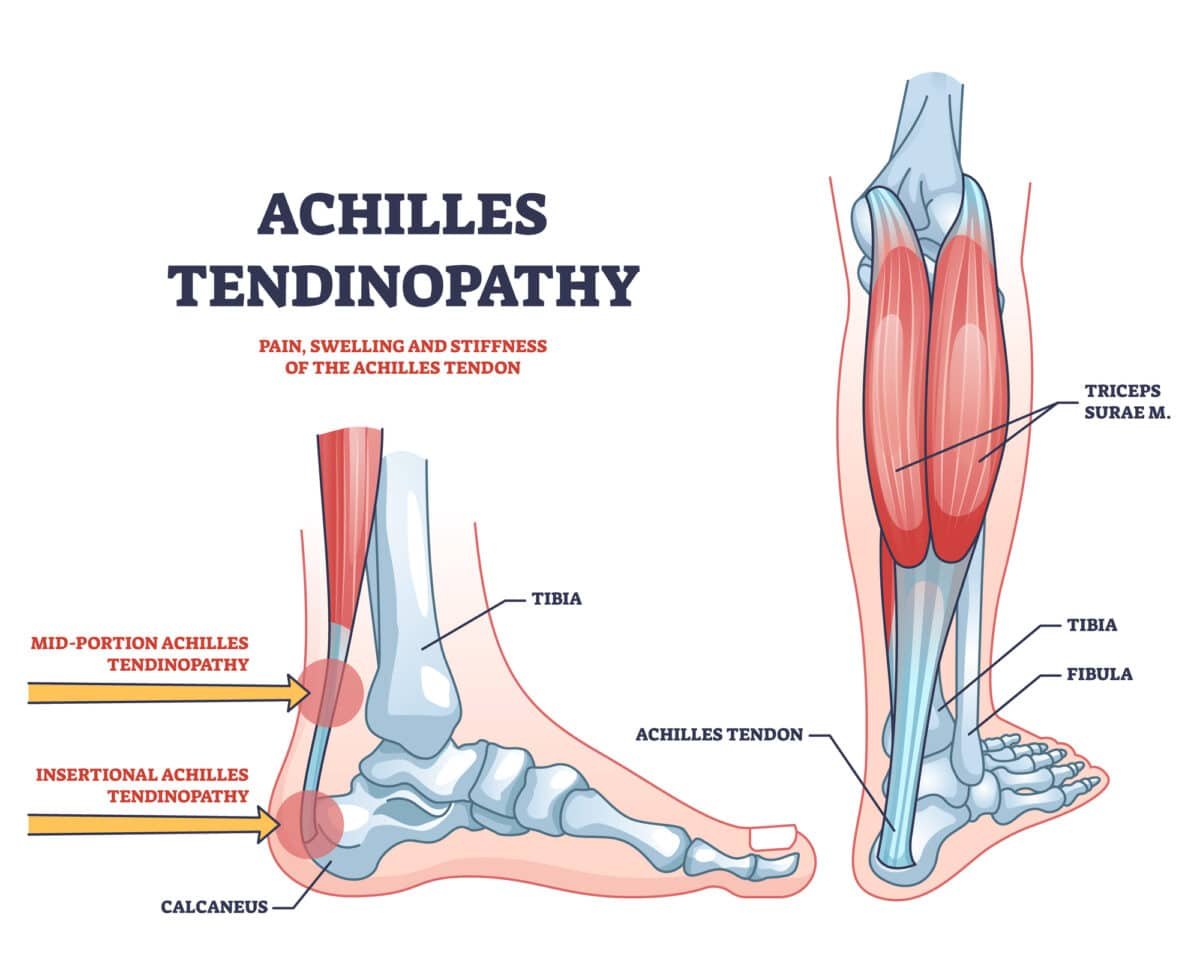ACHILLES TENDON TENDONITIS

Achilles tendinitis is a common cause of pain in athletes. The predisposing factors of the condition include increased mechanical stress on the Achilles tendon, poor perfusion of the tendon 3-4 cm from its insertion, the use of fluoroquinolones as well as inflammatory arthropathies. Pathophysiologically, it appears that continuous microinjuries of the Achilles tendon in combination with any of the aforementioned predisposing factors lead to gradual degeneration of both the tendon and the peritendon sheath. The clinical picture of the condition is characterized by pain, local swelling and redness in the area of the Achilles, usually 3-4 cm above its insertion.
When to see a doctor?
If you experience persistent pain around the Achilles tendon, call your doctor. Seek immediate medical attention if the pain is severe. You may have a ruptured Achilles tendon.
Causes
Achilles tendonitis is caused by repetitive or intense strain on the Achilles tendon, the band of tissue that connects your calf muscles to your heel bone. This tendon is used when you walk, run or jump.
The structure of the Achilles tendon weakens with age, which can make it more prone to injury — especially in people who can only participate in sports on weekends or who have suddenly increased the intensity of their running programs.
Risk factors

Several factors can increase the risk of Achilles tendonitis, including:
- The gender. Achilles tendinitis occurs more often in men.
- Age. Achilles tendinitis is more common as you get older.
- Training options. Running in worn out shoes can increase your risk of Achilles tendinitis. Tendon pain occurs more often in cold weather than in warm weather, and running on hilly terrain can also predispose you to an Achilles injury.
- Medical conditions. People who have psoriasis or high blood pressure are at greater risk of developing Achilles tendonitis.
- Medicines. Certain types of antibiotics have been associated with higher rates of Achilles tendonitis.
Complications
Achilles tendinitis can weaken the tendon, making it more vulnerable to rupture, a painful injury that usually requires surgical repair.
Prevention
Although it may not be possible to prevent Achilles tendonitis, you can take steps to reduce your risk:
- Gradually increase your activity level. If you are just starting an exercise program, start slowly and gradually increase the duration and intensity of your workout.
- Choose your shoes carefully. The shoes you wear during exercise should provide adequate cushioning for your heel and should have firm arch support to reduce stress on the Achilles tendon. Replace your worn out shoes.
- Stretch daily. Take time to stretch your calf muscles and Achilles tendon in the morning, before exercise, and after exercise to maintain flexibility. This is especially important to prevent recurrence of Achilles tendinitis.
- Strengthen your calf muscles. Strong calf muscles allow the calf and Achilles tendon to better handle the stresses they experience during activity and exercise.
- Category
- ΑΡΘΡΟΣΚΟΠΙΚΗ ΧΕΙΡΟΥΡΓΙΚΗ

